Welcome to a journey into the heart of European culture, history, and cuisine. Italy is a country that has captured the imagination of travelers for centuries, a place where ancient ruins stand beside vibrant modern life and every meal is a cherished event. From the rolling hills of Tuscany to the stunning coastline of the Amalfi Coast and the vibrant energy of its cities, Italy offers a sensory experience that is truly unforgettable.
This guide is your compass to navigating a country rich with artistic masterpieces, breathtaking landscapes, and a passion for life. Its historical depth and regional diversity mean that every city, town, and village tells a different story. Planning your trip can feel like a daunting task, but by focusing on the regions that captivate you most, you can craft a personal adventure that you’ll cherish forever.
Practical Information for Your Trip
Visa and Entry Requirements: Italy is a member of the Schengen Area, which means visitors from many countries can enter without a visa for up to 90 days. It is crucial to check the official Italian Ministry of Foreign Affairs website well in advance to confirm the specific requirements for your nationality. Ensure your passport is valid for at least three months beyond your planned departure from the Schengen Area.
Best Time to Visit: Italy is a beautiful destination year-round, but the best times to visit are during the shoulder seasons of April-May and September-October. The weather is pleasant, and the major attractions are less crowded. The summer months of June-August are hot and crowded, especially in cities and coastal areas. The low season, from November-March, offers cooler weather and fewer tourists, making it ideal for budget travelers or those who prefer a more tranquil experience.
Currency and Cost: The official currency is the Euro (€). Credit cards are widely accepted in cities and towns, particularly in restaurants, hotels, and shops. However, it is always a good idea to carry some cash, especially for small purchases at local markets, street vendors, or in more rural, cash-based establishments. The cost of a trip to Italy can vary greatly depending on your travel style, from budget-friendly hostels and local pizzerias to luxurious hotels and fine dining.
Tipping Culture: Tipping in Italy is less common and generous than in many other countries. A “coperto” (cover charge) or “servizio” (service charge) may be added to your bill, and this is considered the tip. If a service charge is not included, leaving a few euros for good service is appreciated but not expected. Rounding up the bill at a cafe is also a common practice.
Getting Around: Italy’s public transportation system is efficient and reliable. Trains are the best way to travel between major cities like Rome, Florence, and Venice. The high-speed Frecciarossa trains are a fast and comfortable option for long-distance travel. For exploring rural areas like Tuscany or Puglia, renting a car offers the most flexibility, though be aware of ZTL (Limited Traffic Zones) in many city centers, which are restricted to local residents. Within cities, buses, trams, and metro systems are your best bet.
Stay Connected with Spark Roam: Navigating Italy’s winding cobblestone streets, translating menus, and sharing your travel photos requires a seamless internet connection. An Italian eSIM from Spark Roam is an essential travel tool. It allows you to activate a local data plan on your phone instantly, avoiding the hassle of finding a physical SIM card or incurring expensive roaming charges. Stay connected with ease and explore Italy with confidence.
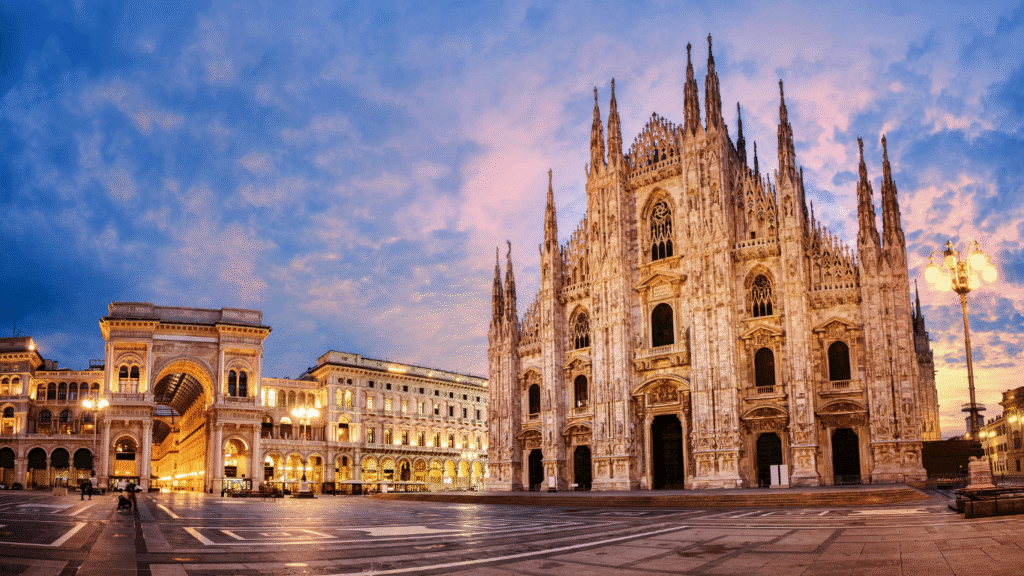
Top Italian Destinations and Regions
Italy is divided into 20 regions, each with its own unique traditions, cuisine, and dialect. To truly experience the country, consider focusing on a specific region or a combination of nearby areas.
1. Northern Italy: The Grandeur of the Alps and Renaissance Splendor
The north is a region of stunning contrasts, from the dramatic peaks of the Dolomites to the elegant canals of Venice and the fashion capital of Milan. Highlights:
- Venice: A city built on water, famous for its gondolas, intricate bridges, and St. Mark’s Square. While Venice can be crowded, be sure to explore the hidden alleyways away from the main tourist paths to find its true charm. Don’t miss the Rialto Bridge and a trip to the nearby islands of Murano and Burano.
- Milan: A global hub for fashion and design, but also a city of immense historical significance. Visit the Duomo di Milano, one of the world’s most impressive Gothic cathedrals, and see Leonardo da Vinci’s “The Last Supper” at the Santa Maria delle Grazie convent (book tickets months in advance!).
- The Italian Riviera: A beautiful stretch of coastline with colorful fishing villages like Cinque Terre. You can hike the coastal trails between the five villages or take a ferry to hop from one to the next.
- The Dolomites: A paradise for hikers and skiers, with breathtaking mountain scenery and charming alpine villages. These are a must-see for outdoor enthusiasts.
- The Italian Lakes: Nestled at the foot of the Alps, Lake Como and Lake Garda offer a serene escape with beautiful villas, gardens, and picturesque towns like Bellagio and Sirmione.
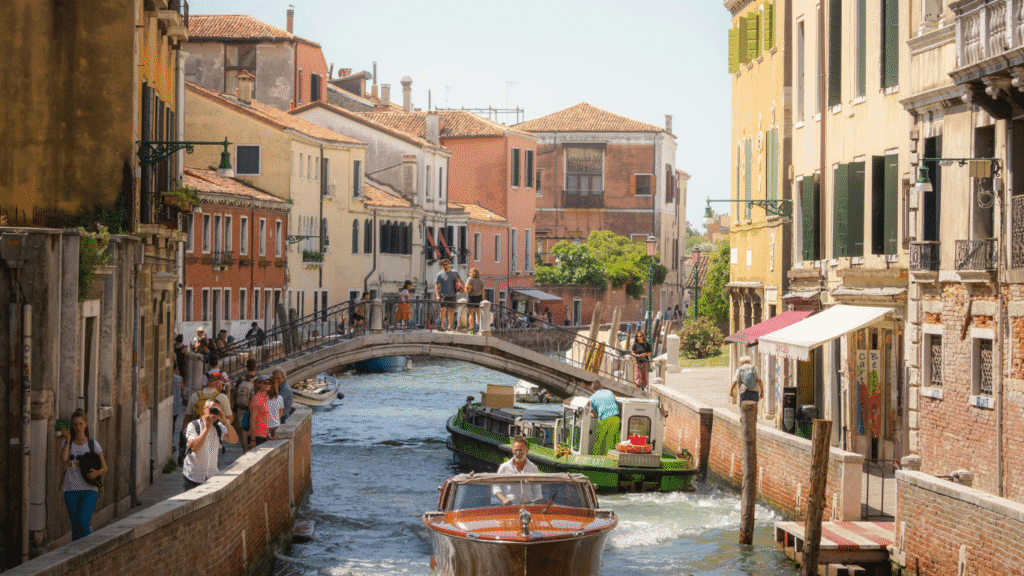
2. Central Italy: The Birthplace of the Renaissance
This is the heart of Italy, a region steeped in history, art, and romance. It is home to some of the country’s most iconic and visited cities.
Highlights:
- Rome: The “Eternal City” is a living museum. Explore the Colosseum and the Roman Forum, which once served as the heart of the Roman Empire. Don’t miss the Pantheon, an architectural marvel, and the Vatican City, home of St. Peter’s Basilica and the Vatican Museums with the awe-inspiring Sistine Chapel.
- Florence: The cradle of the Renaissance. Admire masterpieces by Michelangelo and Botticelli at the Uffizi Gallery, climb to the top of the Duomo for panoramic city views, and wander across the Ponte Vecchio, Florence’s oldest bridge.
- Tuscany: Famous for its rolling hills, cypress trees, vineyards, and medieval hill towns like Siena and San Gimignano. A perfect destination for a leisurely road trip through the heart of Italy’s wine country, savoring Chianti and Brunello.
- Umbria: Often called the “Green Heart of Italy,” it offers a quieter alternative to Tuscany with picturesque towns like Orvieto and Assisi, rich in art and spiritual history.
- Bologna: The culinary capital of Italy. Known for its delicious cuisine, stunning porticoes, and the oldest university in the Western world. Be sure to try traditional dishes like tagliatelle al ragù. A perfect photo op: The iconic Colosseum in Rome bathed in the golden light of a sunset. (Image Placement)
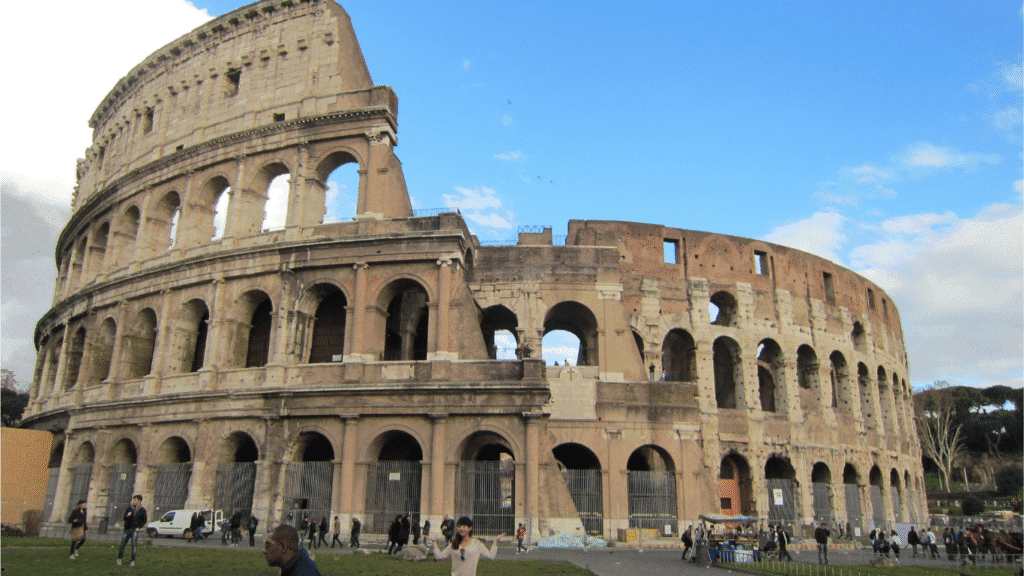
3. Southern Italy: Ancient Ruins and Coastal Beauty
The south is where you’ll find ancient Greek and Roman ruins, dramatic coastlines, and a relaxed, sun-drenched way of life. Highlights:
- Naples: The birthplace of pizza, Naples is a gritty, energetic city with a rich history. It is the gateway to the ancient cities of Pompeii and Herculaneum, buried by Mount Vesuvius.
- The Amalfi Coast: A breathtakingly beautiful stretch of coastline with cliffside villages like Positano and Amalfi. Driving the winding road offers spectacular views, but a ferry is a great way to see it all and avoid the stressful traffic.
- Pompeii and Herculaneum: These archaeological sites offer a haunting and fascinating glimpse into daily life in ancient Roman times, perfectly preserved by volcanic ash.
- Puglia: The “heel of the boot” is known for its unique “trulli” stone houses, beautiful beaches, and olive groves. It’s a less-traveled region with a more authentic Italian feel.
- Matera: A UNESCO World Heritage site known for its ancient cave dwellings (sassi) carved into the rock, which have been inhabited since the Paleolithic era. A perfect photo op: The colorful cliffside homes of Positano on the Amalfi Coast cascading down to the sea. (Image Placement)
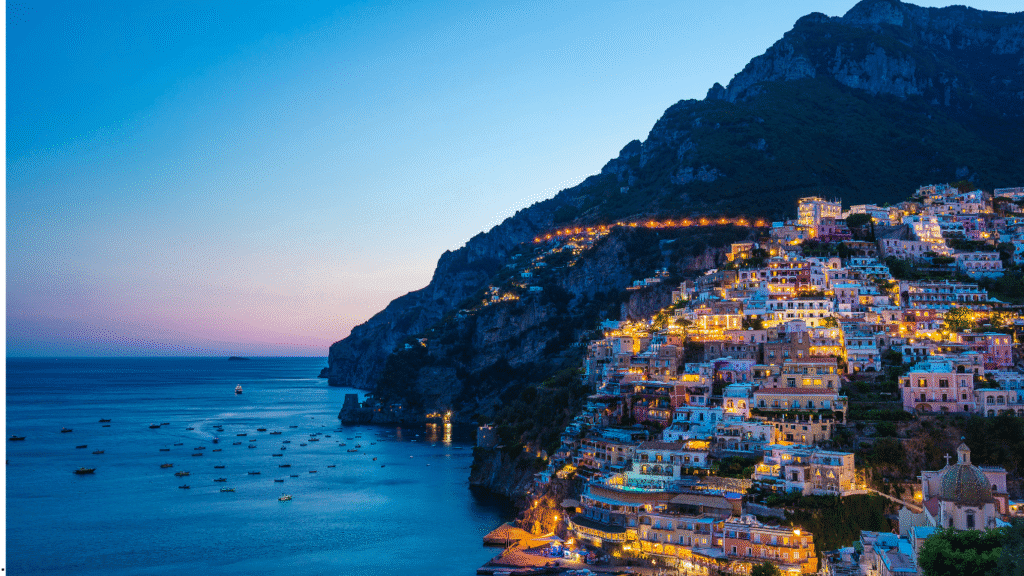
4. The Italian Islands: A Mediterranean Paradise
Italy’s two largest islands, Sicily and Sardinia, each offer a distinct flavor of Mediterranean charm, history, and natural beauty. Highlights:
- Sicily: The largest Mediterranean island. Explore the ancient Greek temples of Agrigento, the bustling markets of Palermo, the beautiful beaches of Taormina, and the towering volcanic Mount Etna.
- Sardinia: Known for its stunningly clear turquoise waters and pristine beaches along the Costa Smeralda. It is a more rugged and wild destination than Sicily, with its own unique Nuragic ruins and a strong local culture.
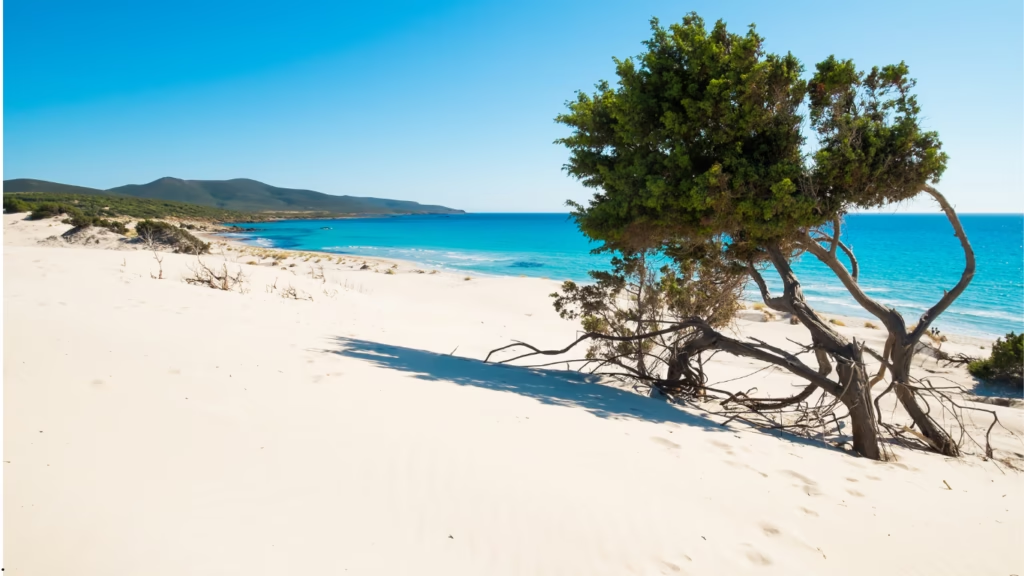
Sample 10-Day Italian Itinerary: “The Classic Triangle”
This itinerary is perfect for a first-time visitor, combining three of Italy’s most iconic and culturally significant cities. All travel can be done easily by high-speed train.
Day 1-4: Rome
- Day 1: Arrive at Leonardo da Vinci–Fiumicino Airport (FCO) and take the express train to Rome’s central station, Termini. Settle in and spend the afternoon exploring the ancient Roman Forum and the Colosseum. End your day with a classic Roman dinner in a traditional Trattoria.
- Day 2: Immerse yourself in the Vatican City. Visit St. Peter’s Basilica, climb the dome for incredible views, and explore the Vatican Museums, including the Sistine Chapel. Remember to book tickets online in advance to skip the long lines.
- Day 3: A day for exploration. Throw a coin into the Trevi Fountain, stroll through the Spanish Steps, and admire the perfectly preserved Pantheon. In the evening, explore the vibrant Trastevere neighborhood for dinner and drinks.
- Day 4: Take a morning walk to the beautiful Borghese Gardens and then catch an afternoon high-speed train to Florence.
Day 5-7: Florence
- Day 5: Arrive in Florence. Walk from the station to your accommodation. In the afternoon, visit the Galleria dell’Accademia to see Michelangelo’s original “David.” Walk across the historic Ponte Vecchio at sunset.
- Day 6: Spend the morning at the Uffizi Gallery, home to masterpieces of the Renaissance. Afterwards, climb to the top of Brunelleschi’s Dome for a breathtaking panoramic view of the city.
- Day 7: Take a day trip into the Tuscan countryside. Consider a bus tour or a train ride to nearby Siena or the Chianti wine region for a tasting.
Day 8-10: Venice
- Day 8: Take a morning high-speed train from Florence to Venice. Upon arrival, take a water bus (vaporetto) down the Grand Canal to your hotel. Spend the afternoon getting lost in the city’s labyrinthine alleys.
- Day 9: Explore the main sights. Visit St. Mark’s Square, the Doge’s Palace, and the Bridge of Sighs. Take a gondola ride in the afternoon for a classic Venetian experience.
- Day 10: Before heading to Marco Polo Airport (VCE), take one last stroll, perhaps to the Rialto Bridge, for some souvenir shopping and a final Italian breakfast.
Sample 10-Day Itinerary: “Southern Italy & The Amalfi Coast Adventure”
For those who want to experience the dramatic landscapes and ancient history of Italy’s sun-soaked south, this itinerary offers a fantastic alternative.
Day 1-3: Rome (The Gateway)
- Day 1: Arrive in Rome (FCO) and take a train to your hotel. Spend the afternoon settling in and enjoying a classic Roman meal.
- Day 2: Explore the Colosseum and Roman Forum to get a taste of ancient history.
- Day 3: Visit the Vatican City and the surrounding area. Remember to dress appropriately for the basilica.
- Day 4: Take an early high-speed train from Rome to Naples. Check into your hotel and spend the afternoon exploring the city’s historic center and street food scene. Don’t miss a slice of authentic Neapolitan pizza.
Day 5-6: Pompeii & Mount Vesuvius
- Day 5: From Naples, take the Circumvesuviana train to Pompeii. Spend the day exploring the haunting ruins of the ancient city, perfectly preserved by the volcanic eruption.
- Day 6: Take a bus or tour to the top of Mount Vesuvius for incredible views of the crater and the Bay of Naples. In the afternoon, take a train back to Naples.
Day 7-9: The Amalfi Coast
- Day 7: Take a ferry from Naples to Positano on the Amalfi Coast. This is the most scenic way to arrive. Check into your hotel and spend the afternoon wandering the colorful streets and taking photos.
- Day 8: Take a ferry to the town of Amalfi. Explore the stunning Duomo and its bustling piazza. In the afternoon, continue to Ravello, a peaceful clifftop town known for its beautiful villas and gardens.
- Day 9: Take a day trip to the island of Capri via ferry. Visit the Blue Grotto and enjoy the island’s glamorous atmosphere.
Day 10: Departure
- From the Amalfi Coast, you can take a ferry or a car service back to Naples for your flight home.
Essential Travel Tips
Master the Local Phrases: Knowing a few basic Italian phrases can go a long way. “Buongiorno” (good morning), “Grazie” (thank you), and “Dov’è il bagno?” (Where is the bathroom?) are great starting points.
Embrace the “Passeggiata”: The “passeggiata,” or evening stroll, is a cherished Italian tradition. Join the locals as they walk through town centers, socialize, and enjoy the evening air. It’s a wonderful way to experience Italian culture.
Beware of Tourist Traps: In major cities, many restaurants near tourist attractions may overcharge and offer lower quality. Wander a few blocks away from the main square or landmark to find more authentic, better-priced food.
Dress Appropriately: When visiting churches, particularly the Vatican, it’s essential to dress modestly. This means covering your shoulders and knees. Many attractions will not allow entry if this dress code is not met.
Language: While English is widely spoken in major tourist areas, especially among younger generations, you will find that locals in more rural towns or smaller shops may not speak English. A phrasebook or a translation app on your phone is invaluable.
Safety: Italy is generally a safe country, but be aware of pickpockets in crowded tourist areas, especially on public transport and at train stations. Keep your belongings secure and be vigilant.
A Taste of Italy
Italian cuisine is a regional art form, and you should make it a mission to taste the specialties of each area you visit. Don’t leave without trying:
- Pizza: From its birthplace in Naples, a simple Margherita is a must.
- Pasta: Each region has its own signature dish, from the carbonara and cacio e pepe of Rome to the pesto of Liguria and the hearty bolognese of Emilia-Romagna.
- Gelato: A creamy, rich alternative to ice cream that you’ll find on every corner.
- Espresso: Enjoy a quick shot of coffee at a bar, standing up, just like the locals do.
Italy offers a huge array of experiences for any kind of traveler. With a little planning and the right tools, you can explore its cities, coasts, and diverse cultures with ease. Enjoy your Italian adventure!

